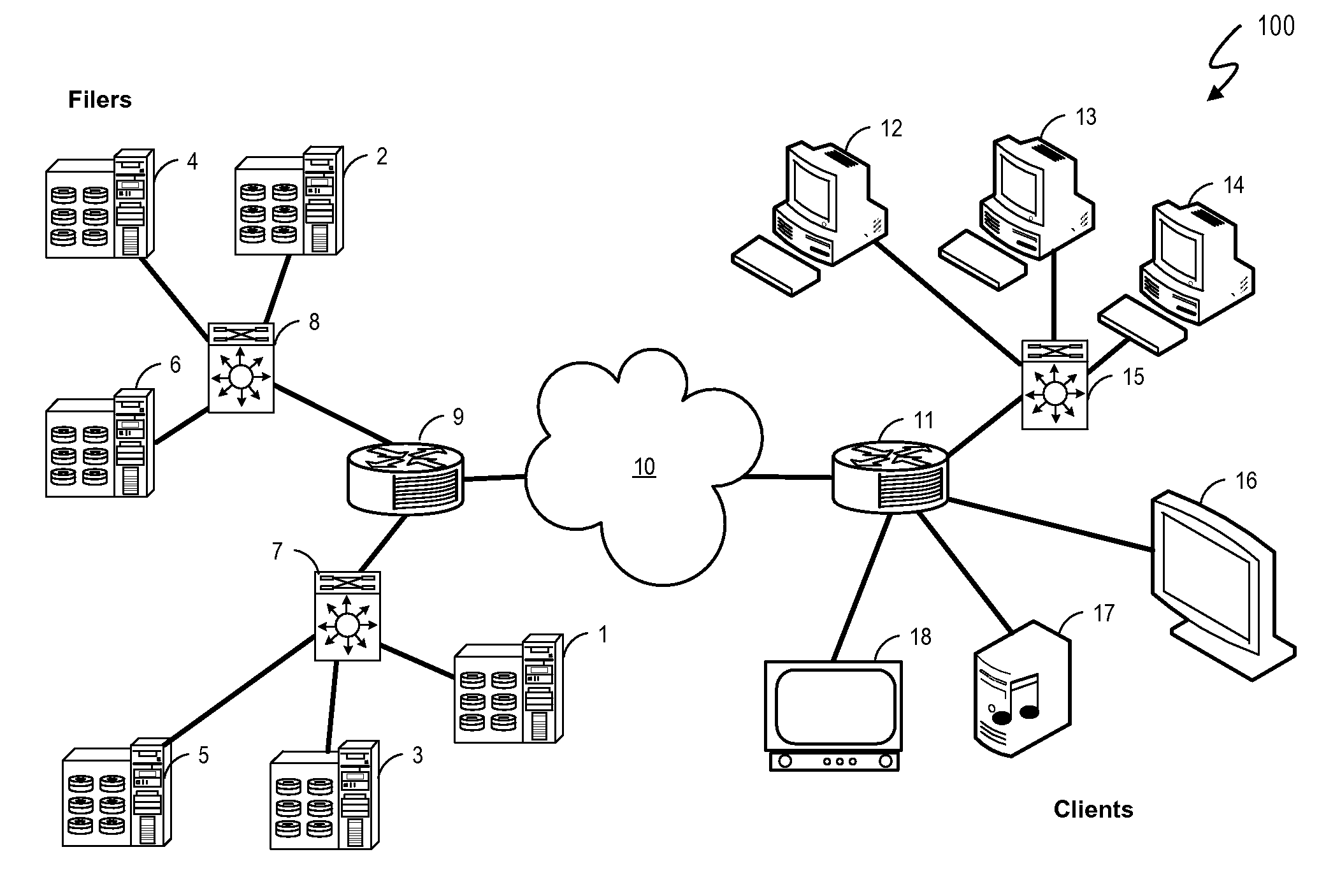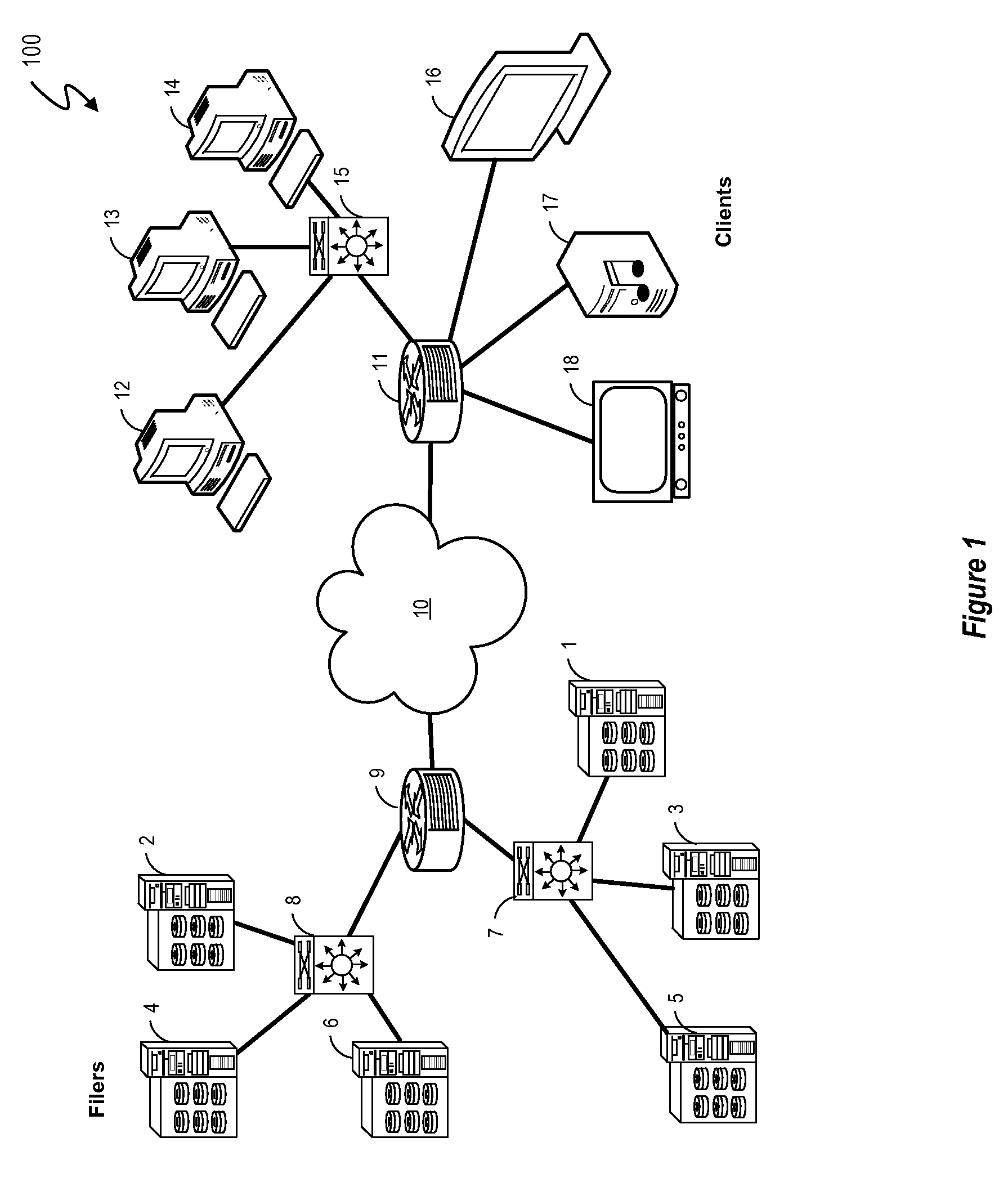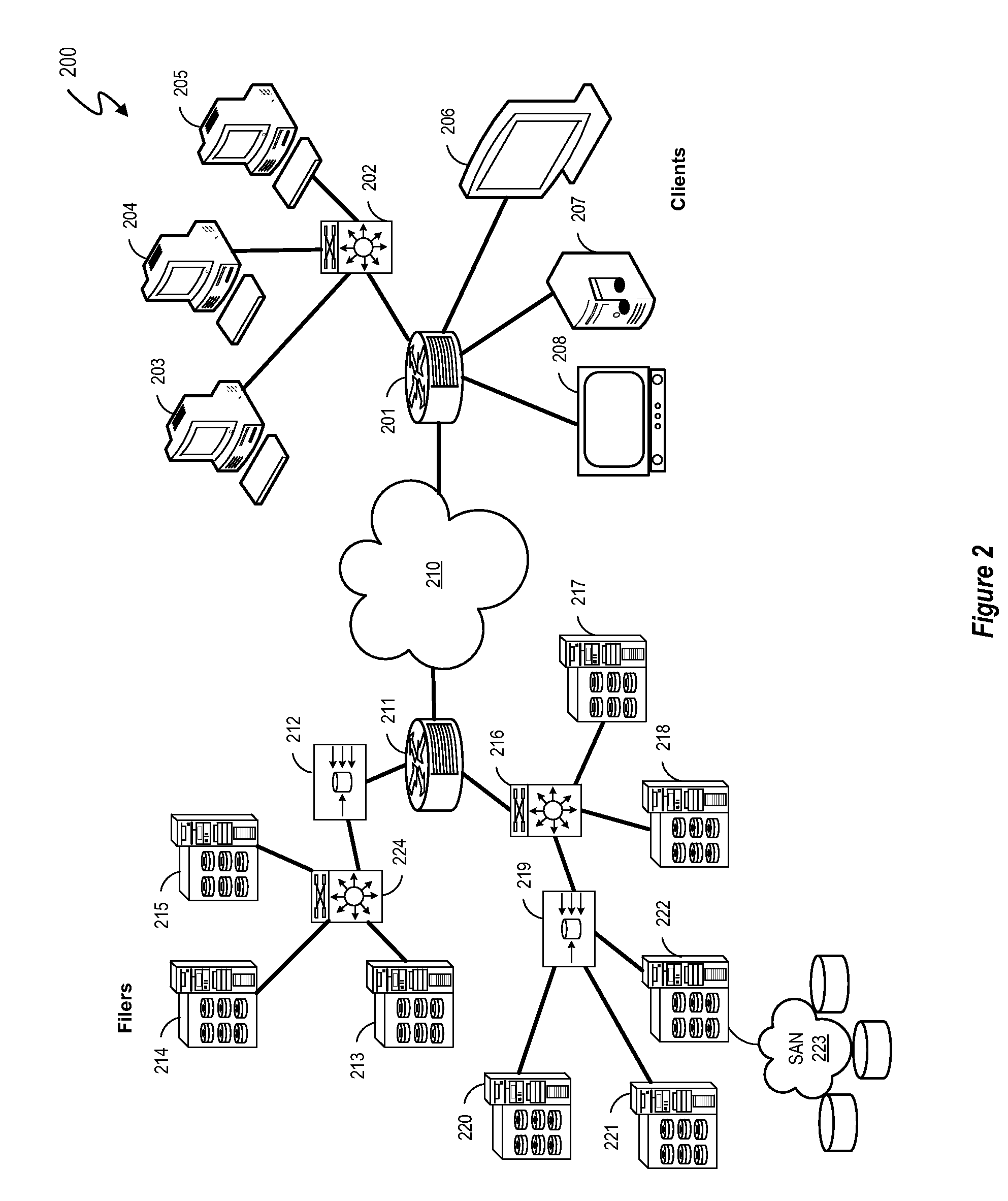Pattern Matching Technique
a pattern matching and pattern technology, applied in the field of packet inspection, can solve the problems of cots appliances that cannot process 15 of a gigabit ethernet connection, and cannot guarantee the performance of nas devices, so as to achieve the effect of quick execution of softwar
- Summary
- Abstract
- Description
- Claims
- Application Information
AI Technical Summary
Benefits of technology
Problems solved by technology
Method used
Image
Examples
Embodiment Construction
[0018]A method, system and program are disclosed for accelerating data storage access by caching selected data in a scalable, stand-alone cache appliance that transparently monitors NFS and CIFS traffic between clients and NAS subsystems and caches files using dynamically adjustable cache policies that reflect the business requirements and / or application workloads that change over time. In selected embodiments, one or more cache appliances may be connected or clustered together in front of an NAS filer (group) to provide low-latency access and redundancy in responding to both read and write requests for cached files, thereby improving access time to the data stored on the disk-based NAS filer (group). Instead of requiring the host processor / caching policy to find a matching pattern by searching the entirety of the data payloads associated with a given flow which includes a matching pattern, a perfect hashing memory scheme is used to rapidly identify and retrieve predetermined patter...
PUM
 Login to View More
Login to View More Abstract
Description
Claims
Application Information
 Login to View More
Login to View More - R&D
- Intellectual Property
- Life Sciences
- Materials
- Tech Scout
- Unparalleled Data Quality
- Higher Quality Content
- 60% Fewer Hallucinations
Browse by: Latest US Patents, China's latest patents, Technical Efficacy Thesaurus, Application Domain, Technology Topic, Popular Technical Reports.
© 2025 PatSnap. All rights reserved.Legal|Privacy policy|Modern Slavery Act Transparency Statement|Sitemap|About US| Contact US: help@patsnap.com



